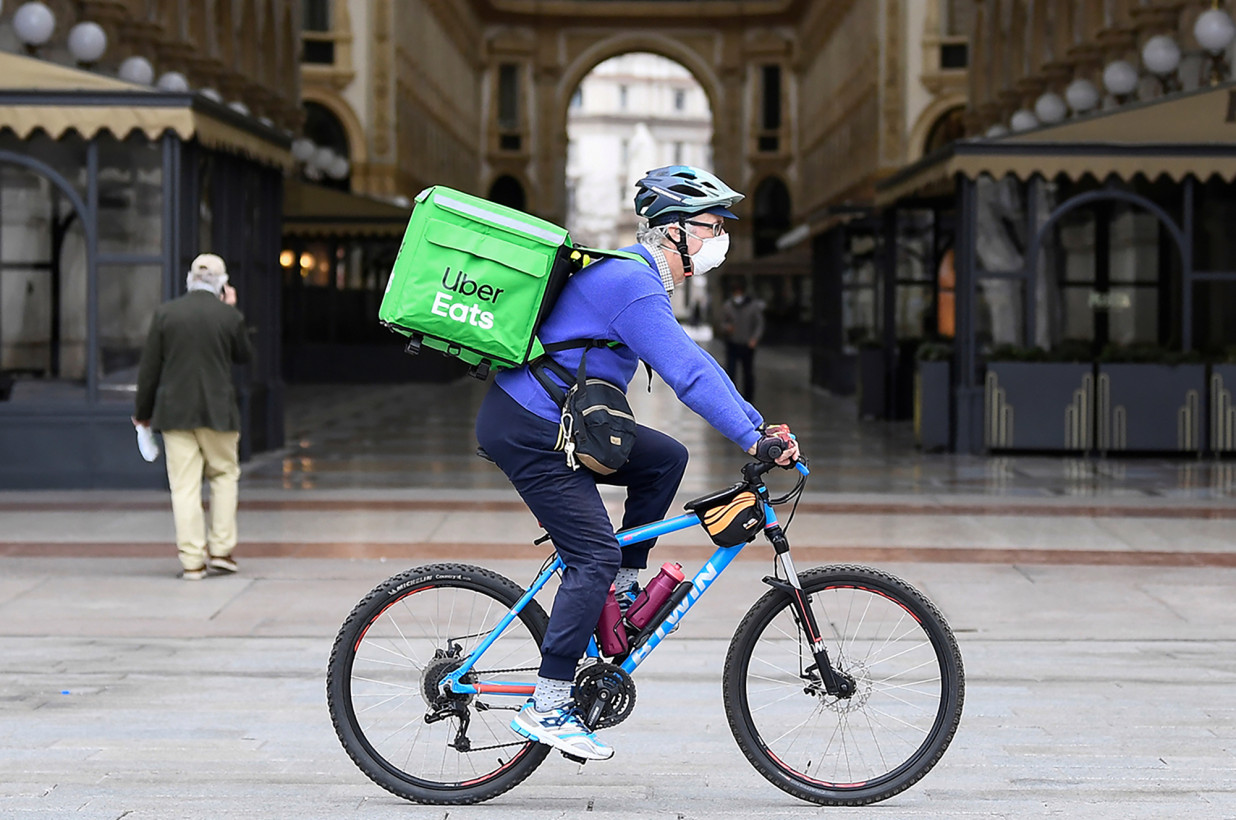Restaurants have always needed a better way to handle staffing issues even in the best of times, however with the current global health crisis finding replacements for soon to reopen restaurants has gotten a boost through technology specifically, GIG hiring app which are on the rise. Articles have said that the tight labor market, high employee turnover and millennials’ desire for flexible work schedules are driving some restaurant operators to change the way they hire and manage staffers. A growing wave of tech companies are building hiring platforms designed to make it easier for operators and workers to fill open shifts. “We’re playing with some of the app hiring, but in very linear sense,” said Dine Brands Global Chief Information Officer Adrian Butler. “At some point, if the labor market and the pool remains as tight as it does now, we’re going to have to break the model of hiring and basically training for several weeks and getting them to competency, and then having them leave six months later. That has to evolve.” Active companies in the markets this week include ShiftPixy, Inc. (NASDAQ: PIXY), Grubhub Inc. (NYSE: GRUB), Slack Technologies, Inc. (NYSE: WORK), Uber Technologies, Inc. (NYSE: UBER), Lyft, Inc. (NASDAQ: LYFT).
App-based hiring and scheduling platforms can offer an alternative to the traditional model, enabling restaurants to connect with a pool of qualified workers. The gig model is well-suited to fill the needs of restaurants and hospitality companies, which depend on a workforce that is largely part-time. In fact, just 44% of restaurant employees are full-time/full-year employees, compared to 70% of the total US workforce, according to National Restaurant Association analysis of data from the US Census Bureau’s American Community Survey. New and emerging hiring platforms aim to help operators tap into this part-time workforce in a more efficient way, narrowing the pool to focus on candidates with the right skills and qualifications. Some platforms cater to multiple industries, but restaurant-specific platforms have also started to emerge.
ShiftPixy, Inc. (NASDAQ: PIXY) BREAKING NEWS: ShiftPixy Launches Comprehensive ‘Restaurant Resilience Plan’ to Support Restaurants through COVID-19 Pandemic – ShiftPixy, announced a new, organization-wide effort, called the “Restaurant Resilience Plan,” that is composed of product, operational, marketing and communication initiatives designed intently to support and catalyze restaurants across the U.S. to weather the current Coronavirus pandemic. Furthermore, the Restaurant Resilience Plan is also devised to help restaurant operators to leverage technology solutions to implement an infrastructure that allows for flexibility and maximization of employees, both during the pandemic and as businesses begin returning to normal operations.
“As a partner to restaurants across the country, we recognized the opportunity to support operators and their employees in their tireless and valiant effort to navigate the obstacles the current pandemic presents through this company-wide effort,” said Scott Absher, CEO and co-founder of ShiftPixy. “Just like our platform is designed for end-to-end engagement, the Restaurant Resilience Plan is our way of providing restaurants with the technology, services and support that they need both now and in the future.”
With its revolutionary platform, ShiftPixy offers restaurants the human capital management solutions to agilely deploy employee resources most effectively across digital ordering and native delivery, so they no longer have to sacrifice revenue to third-party services.
“We’re uniquely positioned to empower restaurants, so we feel it’s our duty to offer the Restaurant Resilience Plan so that restaurants can focus on their business of offering the best food experience,” concluded Absher.
The Restaurant Resilience Plan launched today and the company will be announcing additional initiatives and services in the coming days and weeks. Read this and more news for ShiftPixy at: https://www.financialnewsmedia.com/news-pixy/
Other recent developments in the markets this week include:
Grubhub Inc. (NYSE: GRUB) a leading online and mobile food-ordering and delivery marketplace, recently announced that in collaboration with the mayors of large cities across the United States who are on the front lines of the COVID-19 response efforts, Grubhub today announced it is temporarily suspending collection of up to $100 million in commission payments from impacted independent restaurants nationwide.
Grubhub’s initiative will provide immediate and substantial cash flow relief to qualified independent restaurants — restaurants that make up the majority of Grubhub’s 350,000+ restaurant community and drive more than 80 percent of the company’s orders.
Matt Maloney, Grubhub Founder and CEO said: “Independent restaurants are the lifeblood of our cities and feed our communities. They have been amazing long-term partners for us, and we wanted to help them in their time of need. Our business is their business — so this was an easy decision for us to make.”
Slack Technologies, Inc. (NYSE: WORK) recently announced the pricing of $750.0 million aggregate principal amount of 0.50% convertible senior notes due 2025 (the “notes”) in a private offering (the “offering”) only to persons reasonably believed to be qualified institutional buyers pursuant to Rule 144A under the Securities Act of 1933, as amended (the “Securities Act”). The offering was upsized from the previously announced offering of $600.0 million aggregate principal amount of notes. In connection with the offering, Slack granted the initial purchasers an option to purchase up to an additional $112.5 million aggregate principal amount of notes. The sale is expected to close on April 9, 2020, subject to customary closing conditions.
The notes will bear interest at a rate of 0.50% per year, payable semi-annually in arrears on April 15 and October 15 of each year, beginning October 15, 2020. The notes will mature on April 15, 2025, unless earlier converted, repurchased or redeemed in accordance with their terms. Prior to January 15, 2025, the notes will be convertible only upon satisfaction of certain conditions and during certain periods. On or after January 15, 2025, the notes will be convertible at any time until the close of business on the second scheduled trading day immediately preceding the maturity date.
Uber Technologies, Inc. (NYSE: UBER) recently announced financial results for the quarter ended March 31, 2020. Financial Highlights for First Quarter 2020 – Gross Bookings grew to $15.8 billion, up 8% year-over-year, or 10% on a constant currency basis, with Rides declining 3% and Eats growing 54% year-over-year, respectively, on a constant currency basis.
“While our Rides business has been hit hard by the ongoing pandemic, we have taken quick action to preserve the strength of our balance sheet, focus additional resources on Uber Eats, and prepare us for any recovery scenario,” said Dara Khosrowshahi, CEO. “Along with the surge in food delivery, we are encouraged by the early signs we are seeing in markets that are beginning to open back up. Our global footprint and highly variable cost structure remain an important advantage, as our expectation is that the Rides recovery will vary by city and country.”
Lyft, Inc. (NASDAQ: LYFT) recently announced financial results for its first quarter ended March 31, 2020.
First Quarter 2020 Financial Highlights – Lyft reported Q1 revenue of $955.7 million versus $776.0 million in the first quarter of 2019, an increase of 23 percent year-over-year.
Net loss for Q1 2020 was $398.1 million versus a net loss of $1.1 billion in the same period of 2019. Net loss for Q1 includes $169.9 million of stock-based compensation and related payroll tax expenses, as well as $64.7 million of costs related to the transfer of certain legacy auto insurance liabilities and $58.4 million related to changes to the liabilities for insurance required by regulatory agencies attributable to historical periods. Net loss margin for Q1 was 41.7 percent compared to 146.7 percent in the first quarter of 2019.
Adjusted net loss for Q1 2020 was $97.4 million versus an adjusted net loss of $211.5 million in the first quarter of 2019. Adjusted net loss is adjusted for amortization of intangible assets, stock-based compensation expense, payroll tax expense related to stock-based compensation, changes to the liabilities for insurance required by regulatory agencies attributable to historical periods, costs related to the transfer of certain legacy auto insurance liabilities and expenses related to acquisitions.
SOURCE Financialnewsmedia.com









